Whether your four-legged friend suffers from noise-related anxiety or their incessant barking is driving you insane, you’re probably wondering if there’s any way that you can soundproof a dog crate.
Unfortunately, there’s no real way to actually soundproof the crate itself.
Why? There are actually several reasons:
However, while you may not be able to soundproof the dog crate, there are ways that you can prevent unwanted noises from traveling into and out of your furry friend’s space. - How? You can soundproof the room the crate is located in.
Before we discuss the strategies that you can use to reduce the noise levels inside a dog crate and the sounds that travel out of it, it’s important to discuss how sound and soundproofing works.
First, it’s important to understand the different types of sound. Obviously, the purpose of soundproofing is to eliminate undesirable sounds.
In order to effectively do so, you need to pinpoint the type of noise you want to eliminate because different types of sound require different soundproofing methods.
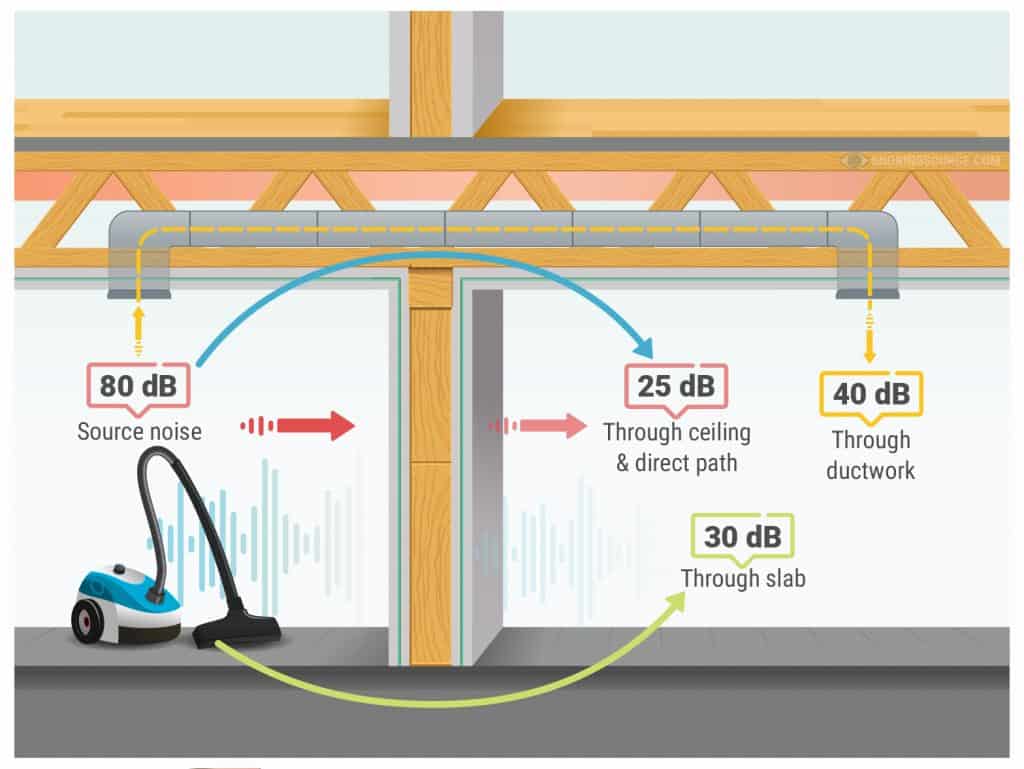
The most commonly experienced type of noise is airborne sound. Examples include people speaking, the sounds from a TV, music, and even your dog barking.
When an object creates a noise, it generates vibrations, or soundwaves. Those vibrations are picked up by a medium, and in the case of airborne sound, that medium is air. Once the soundwaves are picked up, they travel through the air until they collide with a solid surface.
The soundwaves then pass through and are released, so-to-speak, on the other side. This is why you can hear your dog barking while he’s in his crate from another room, and it sounds as if he’s sitting right next to you.
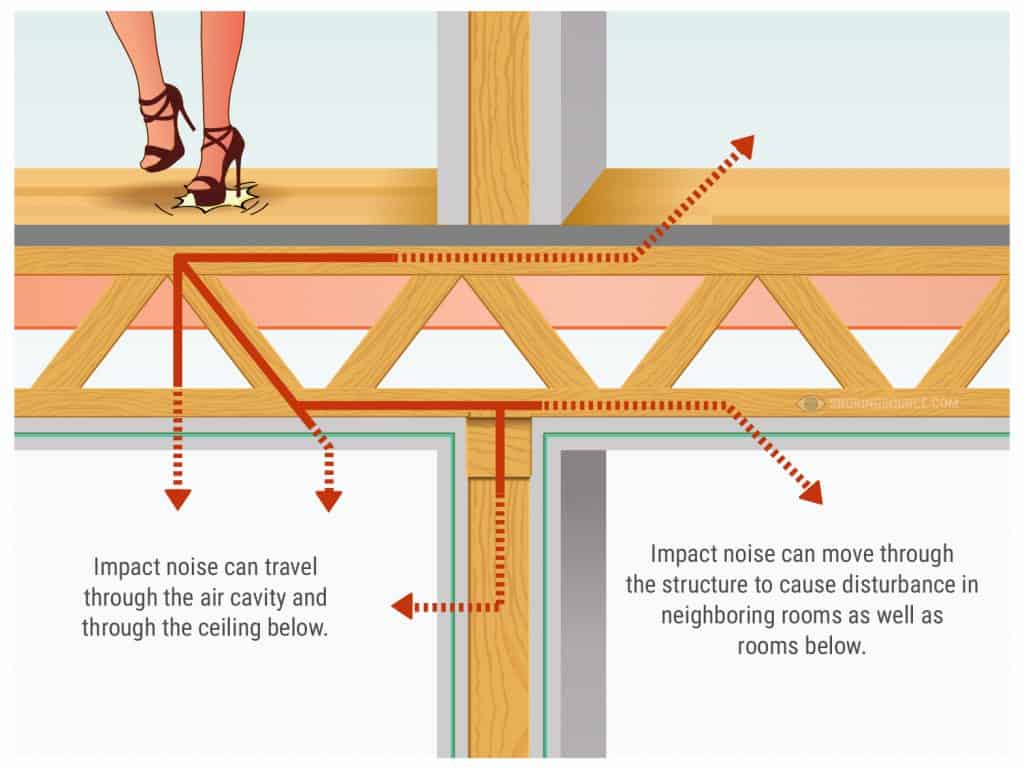
The second type of noise is structure-borne sound, which is also known as impact noise. This is the type of sound you hear when a solid object collides with another solid object.
The soundwaves created by the collision pass through a structural element; a floor, a wall, or a door, for example. In other words, the structure serves as the medium that soundwaves travel through.
Common examples of structure-borne noise include footsteps walking overhead, a knock on a door, a washing machine vibrating against a floor, or a hammer banging into a wall.
In order to determine what type of sound you want to eliminate, you can conduct a simple test: When you hear the noise you want minimize, place your hand against the surface you hear it traveling through; if you feel a vibration, the noise is structure-borne, if you don’t, it’s airborne.
Soundproofing any space requires the use of a variety of materials. These materials are designed to decouple, that is, break up the paths that soundwaves travel through, thereby minimizing their transmission. As such, soundproofing materials are dense.
Therefore, in order to soundproof a dog crate specifically, the walls, roof, and floor of the structure would need to be isolated, which would involve building an additional structure around the crate.
Additionally, you’d have to decouple the crate. As you can imagine, doing so would be virtually impossible, as you would have to block out air, which obviously isn't an option.
While it’s pretty much impossible to soundproof the dog crate itself, you can still eliminate some of the unwanted noises by soundproofing the space itself.

Drywall is a material comprised of gypsum that's wrapped in thick sheets of paper.
While drywall does offer some soundproofing capabilities, in many cases the drywall used to construct walls isn't dense enough to eliminate airborne and impact noise.
Meaning, the denser the walls and the ceiling, the less soundwaves can travel through them.
Before installing the additional drywall, apply a layer of Green Glue noiseproofing compound to the existing surface. This material is designed to absorb soundwaves and acts as a thermal insulator.
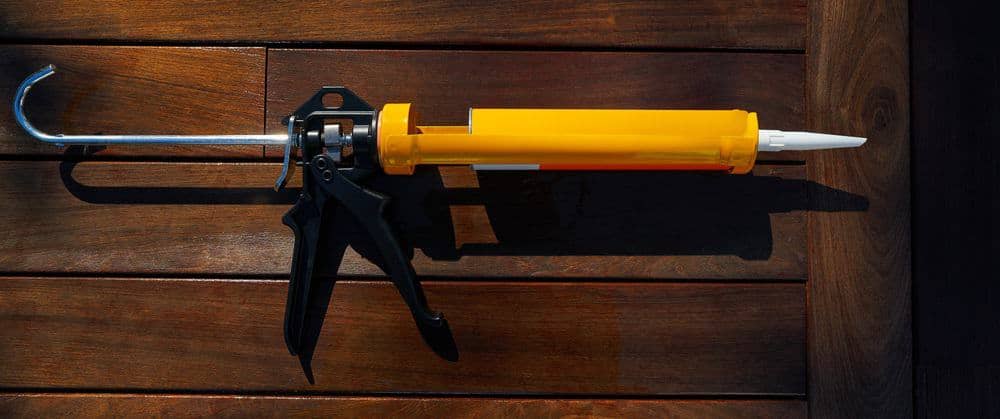
If there are any gaps in your walls or around the walls, seal them up.
Gaps provide an open passage for soundwaves to travel through. By sealing them up, you’ll eliminate potential transmission.
To seal up existing gaps, install weather stripping. Cut lengths of weather stripping that are the same length as the space where the gaps exist, remove the protective material that covers the adhesive backing and secure the weather stripping to the surface.
In lieu of or in addition to weather stripping, you could use acoustic sealant. Common places where gaps exist include around windows, underneath doors, and along the edges of walls.
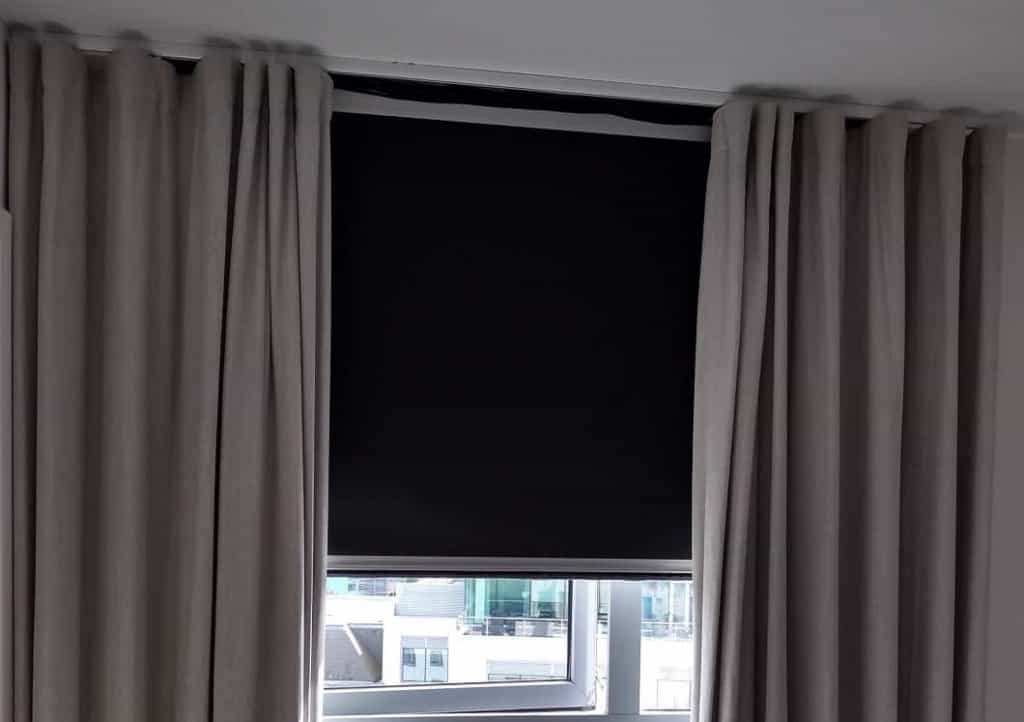
If unwanted noise is traveling through the windows of the room the dog crate is located in, cover them with sound deadening curtains.
These curtains are made of dense fabric that absorb soundwaves and help to prevent them from traveling through the windows.
Sound deadening curtains are available in an assortment of sizes, colors and patterns, so you should be able to find something that works with the design of the space.
For improved results we recommend hanging two layers of curtains. This helps to add mass and density.
Install a double curtain rod over the window and hang two curtains on the rods. When the curtains are drawn, you’ll notice a marked difference in amount of noise that travels through the windows.
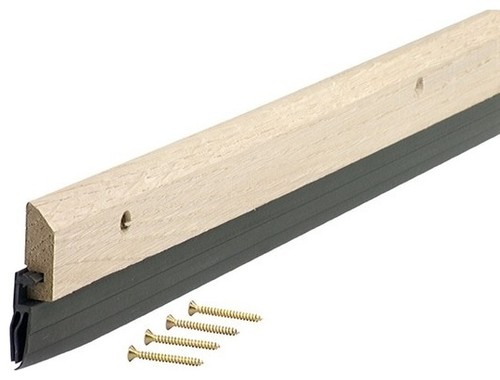
Doors are a common source of noise transfer. As discussed, sealing up the gaps around the door can help to prevent the passage of unwanted noise; however, that may not be enough to render the results that you’re looking for.
To seal up the largest gap on a door – the opening along the bottom – install a draft stopper. These stoppers can either be screwed directly into the bottom of the door, or you can install a removable draft stopper, which can be slipped right under the door.
If the door is hollow, consider replacing it with a solid core door. Solid-core doors are dense which makes it harder for sound-waves to travel through.
Alternatively, you could hang sound deadening curtains above the door and draw them when the door is closed to reduce noise transmission. You could also install moving blankets on both sides of the door.
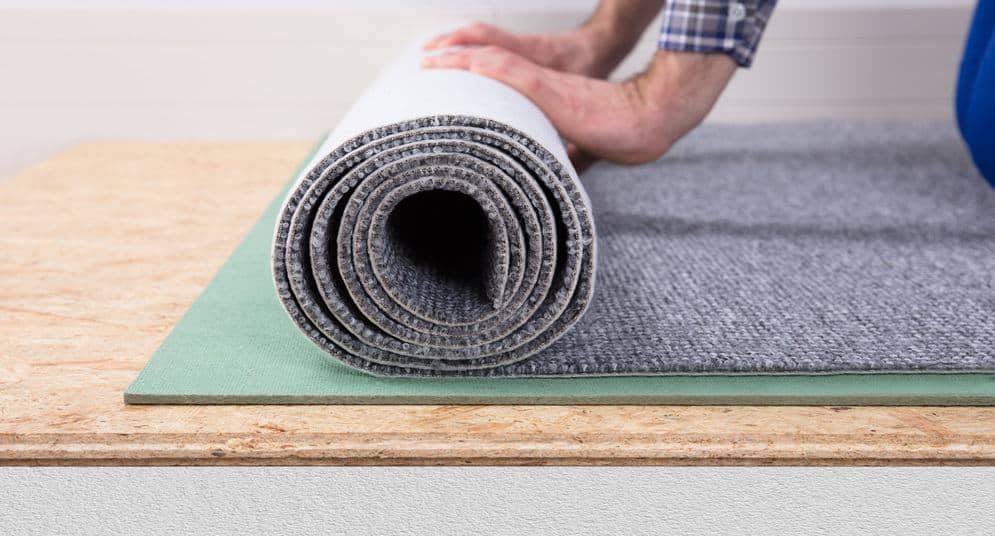
If sound is traveling through the floors, there are a few ways you can soundproof them.
One option is to pull up the existing floor, lay soundproof underlayment, and then replace the floor. Of course, this requires construction and may cost a bit more than you’re looking to spend.
A lower cost alternative: lay down area rugs. Opt for thick rugs, as the thicker the rugs, the more density they’ll provide, and as mentioned, density plays an important role in soundproofing.
For better results, lay soundproof mats underneath the rugs. There are a variety of soundproof mats available; foam, rubber, or a combination of the two materials.
Not only will the mats help to dissipate soundwaves, but they’ll also add cushioning to the floor for added comfort.
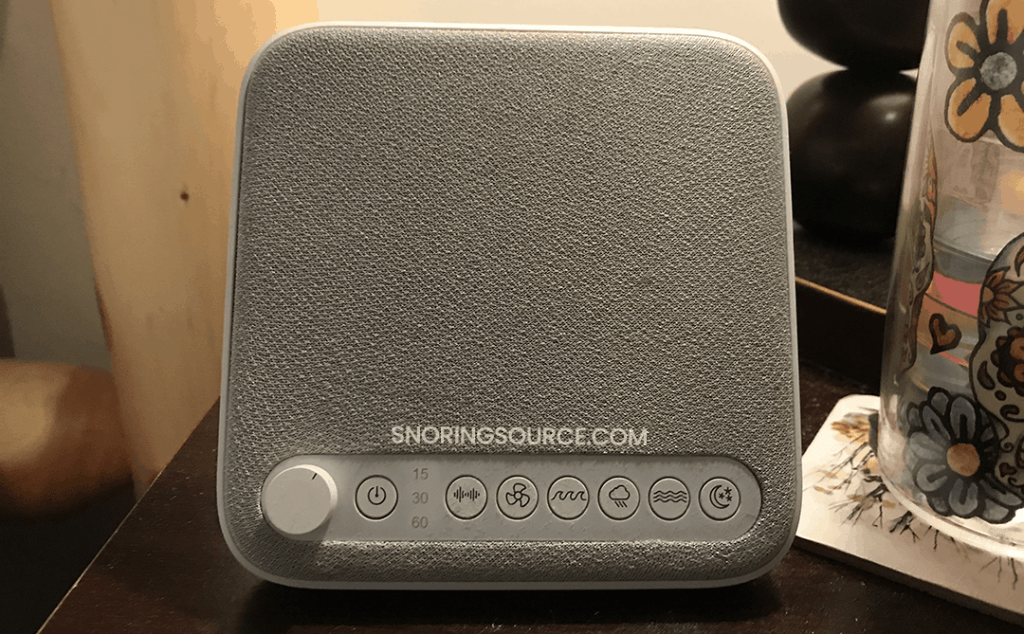
It may seem counter-productive to add noise to a space when you're trying to eliminate it but a white noise maker can help to mask and dissipate sounds that naturally occur in an environment.
Choose sounds that can mask other low frequency sounds. Broadband white noises will help to mask all frequencies. However, as far as your dog is concerned, brown noise will help to mask lower frequencies better than white noise due to it's abundance of lower frequencies.
Dogs tend to bark when they’re nervous or upset; therefore making them feel calm can help to stop the barking. Some strategies to try include:
While you may not be able to soundproof a dog crate, there are several strategies that you can use to soundproof the room the crate is located in.

Snoringsource.com is a participant in the Amazon Services LLC Associates Program, an affiliate advertising program designed to provide a means for website owners to earn advertising fees by advertising and linking to amazon(.com, .co.uk, .ca etc) and any other website that may be affiliated with Amazon Service LLC Associates Program.